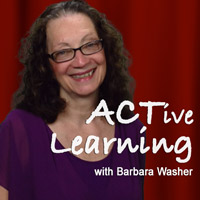| 6 , 7 , 8 | Dance Phy. Education Theater Visual Art Music |
| Theater | English |
| Both Grade Level and Arts/PE Program | Alignment |
| 2 | 45 min |
| 2 | 45 min |
|
Two 45-minute sessions per classroom or one 90 minute session Length and timing of sessions can easily adapt to the Art Specialist's schedule |
|
| In-School Short Term Residency | |
| All year | In-School, |
| $10 | 0 |
| yes | In-Person |
|
Props, handouts and prompts for Sensory Awareness/Recall activities |
|
|
Chart paper or white board Paper (unlined) and Pencil for each student Agreed upon materials, supplies or copies for activities and possible art project |
|
|
Open space in classroom or multi-purpose space large enough for entire class to participate on their feet simultaneously or spread out to work in small groups Access to tables/desks/chairs for writing and/or drawing responses to activities Outdoor space near the building for comparing and contrasting inside/outside sensory explorations (optional) |
|
|
I can demonstrate focus/concentration and sensory awareness by using one or more of my 5 senses to notice specific details when observing a person, place or thing. I can use sensory recall and appropriate grade-level vocabulary to vividly describe a sensory experience by speaking, writing or drawing/labeling and share observations with a partner. I can apply my observations and imagination to add vivid detail to a realistic or abstract visual arts project (alternatively a music, dance or theatre project). |
|
|
Observe - Recall - Create - Repeat!
Art-Sense, guides students to effectively explore the world through their senses, as they develop a personal artistic vision. Inspired by drama exercises, students build concentration and observation skills, heighten sensory awareness, sharpen sensory recall, and stimulate the imagination. (See Additional Notes for sample activities) Session One - Sensory awareness: drama activities invite students to turn off their "auto-pilot" and tune in to details in their immediate surroundings. They then reflect and communicate their observations by drawing, writing, and/or speaking with a partner to compare and contrast sensory experiences and validate each unique perspective. Session Two - Sensory recall: Going beyond just remembering in words, students build tools needed to place themselves "in the moment" and fully re-sense their experiences. Demonstrating with partners or teams and observing others, students discover that audiences can recognize and be drawn into sensations of what is seen, heard, smelled, tasted or touched. Sensory responses then become the inspiration for students designing realistic or abstract art projects selected from the curriculum by the art specialist to be completed in subsequent classes. (If the project selected by the arts specialist focuses on portraits, character study exercises can be substituted for some of the sensory exercises in either session.) Alternatively, Session One can incorporate both sensory awareness and sensory recall activities. In Session Two students work individually or with peers to create a sketch or simple collage that artistically reflects their sensory experiences. * See Additional Notes for applying the residency to other art forms (music/dance/theatre) or for creating extended projects that also incorporate language arts. |
|
|
Sample Activities
Sensory Awareness: Through a Windowpane, Listening to the Environment, Discovering an Object or Trust Walk Sensory Recall: Seeing a Sport, What Am I Listening To? and What's That Food? The skills developed in Art-Sense not only offer a foundation for creating various visual arts projects, but can also support building dance/movement sequences, composing/arranging music/sound, or bringing added reality to drama scenes. Though the database format does not provide space for including arts standards for each discipline, appropriate ones can be selected. If an expanded collaboration is desired, schools may book Art-Sense in conjunction with Vivid Vocabulary. Students can then use their sensory experiences to write poetry or descriptive paragraphs and design/implement an arts project supported by the teaching artist, the language arts teacher and either the visual arts, music, dance or theatre specialist. *All ACTive Learning Through Drama programs have been developed and implemented by a professional theatre educator in collaboration with classroom teachers and arts specialists. |
|
|
1-3 are welcome to assist in the classroom, if desired by the art teacher |
|
Grade 6 |
||||
|
||||
Grade 7 |
||||
|
||||
Grade 8 |
||||
|

